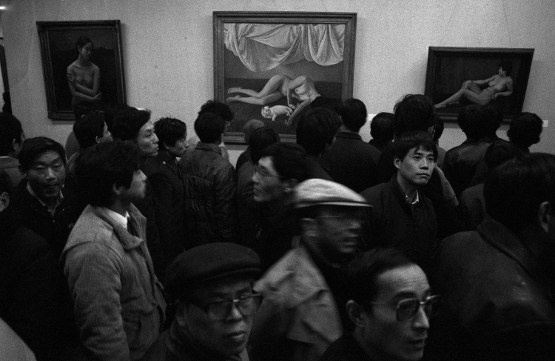
Just as money is the paper, the gallery is the room takes as its point of departure artist organized exhibitions between 1979 and 2006 in Shanghai. Local and international artists have been invited to re-examine and respond to an archive of materials relating to such exhibitions. The archive takes a chronological approach, starting with the 12 Men Painting Exhibition that took place in 1979, and for the first time publicly showed different works by artists who did not belong to any artist association.
Rather than institutions, artists were the sole aggregators of knowledge production through exhibition-making in the early 20th century, and later during the early 80s - making these exhibitions an important vehicle, not only for making art public but as the only site of discourse due to the failure of institutions to do so. The artist initiated exhibitions represented in the archive were significant in introducing so called new art or new practices as well as new exhibition formats
However, the role of artists as ‘curators’, in today’s terminology, has since more or less vanished from the scene due to the commercialization of art practices, which in turn changed exhibition-making practices. Just as money is the paper, the gallery is the room thus attempts to re-activate this local knowledge and practice of artist-led exhibition making, hoping to bring together common threads from the larger context of exhibition making practices across the region, as well as globally, to explore exhibitions as an epistemological engine rather than strategized showcase events, and to re-think the rituals within the art system. The exhibition will also touch on issues such as the experience of art through an exhibition format, the ambivalence between individual and collective, possible exchanges beyond a capitalist mode, the normalization reflected in early exhibitions and the notion of solidarity as a connection point, among many others. By featuring both artist research and responses alongside archival materials, Just as money is the paper, the gallery is the room further aims to complicate the story of some seminal art works and our encounters with them as a public.
The structure of the exhibition is dynamic and is developed in conversation with the invited local and international artists over the exhibition period and beyond its temporal existence. Featured works and artists include 3-ply from Australia and their ongoing Re-print series, which reintroduces out-of-print artist publications to a contemporary audience by exploiting the character of the reprints to intervene in public archives. In particular, 3-ply will re-publish the Shanghai First International Fax Art exhibition catalogue from 1996. IRWIN from Slovenia will revisit their unrealized proposal from 1992: the establishment of an NSK Embassy in China, and will test the ground for its opening. Auckland/Frankfurt based Luke Willis Thompson’s Untitled, on the other hand, seeks to find parallels between the conditions that informed conceptual and performance practices in Shanghai during the years of its prefiguration and the inequities of other cities globally. Lastly, the visual experience of the exhibition is conceived in collaboration with architect Ségolène Dubernet.
About the curator
Biljana Ciric is an independent curator based in Shanghai. Her recent exhibitions include a solo exhibition featuring Tino Sehgal held at the UCCA Beijing, an exhibition hosted by Times Museum titled One Step Forward, Two Steps Back—Us and Institution / Us as Institution and Alternatives to Ritual presented by Goethe Open Space and OCAT in Shenzhen. In 2013, Ciric initiated From History of Exhibitions towards Future of Exhibitions Making, an ongoing seminar platform that proposes to revisit the importance of exhibition making; the seminar platform will specifically be looking at the history of exhibitions in China, South East Asia, Australia and New Zealand. In 2011, Ciric initiated the project Taking the Stage OVER, a year long, ongoing investigation related to the performative aspects of art. She was co-curator of the Asia Triennial in Manchester (2011) and presented the exhibition Institution for the Future. Upcoming publications include Active Withdrawal: Weak Institutionalism and the Institutionalization of Art Practice co-edited with Nikita Yingqian Cai, to be published by Times Museum and History in the Making: Shanghai 1979-2009 published by Black Dog Publishing. Ciric is a regular contributor to Broadsheet and Yishu Journal. She was nominee of the Independent Vision Curatorial Award by Independent Curators International in 2012 and was on the jury for the Hugo Boss Asia Art Award in 2013.
About the exhibition
Duration: 20th Nov 2014 - 28th Feb 2015 Tue - Sat 10:30-18:30, Sun 14:30-18:30
Venue: Osage Shanghai
Opening: Wednesday 19th Novr 2014 18:00-19:00
Add: Room 101, Block 5, Wang Zu City, 251 Cao Xi Road, Xuhui District, Shanghai
Courtesy of the Osage Art Foundation.




























